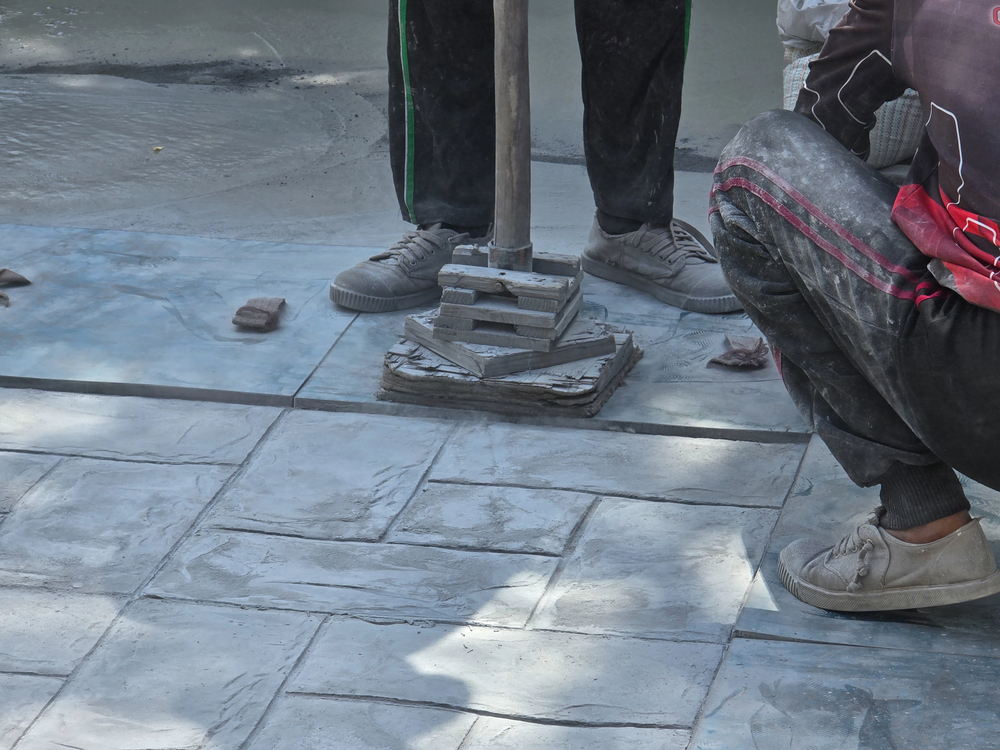Why Concreters Recommend Booking Decorative Work Mid-Year
Thinking of stamped or coloured concrete? Here’s why concreters suggest booking decorative work mid-year, and how to get it done right.

Thinking of upgrading your driveway, patio, or garden path with decorative concrete? You’re not alone. From exposed aggregate to coloured and stamped finishes, decorative concrete remains a popular way to enhance outdoor spaces. But timing matters—and many concreters recommend mid-year as the ideal window for these jobs.
Here’s what every homeowner needs to know about why timing matters, and why many concreters recommend booking decorative work during the cooler months.
What Counts as Decorative Concrete Work?
Decorative concrete refers to concrete that's finished with extra detail to enhance its appearance. The most popular types include:
- Coloured concrete – tinted with pigments before pouring.
- Stamped concrete – patterned to resemble brick, stone or tile.
- Exposed aggregate – where the surface layer is washed off to reveal stones underneath.
- Polished concrete – often used indoors but also becoming popular in garages and alfresco areas.
These finishes require more time, skill, and ideal conditions to achieve clean, consistent results. That’s why the timing of the job matters just as much as the materials used.
Why Mid-Year Is a Smart Time to Book
1. Cooler Temperatures Help with Finish Quality
Concreters often prefer mid-year, particularly winter, for decorative jobs because temperatures are milder. Hot weather causes concrete to set too quickly, which can affect surface finishes—especially for stamped or exposed aggregate work where timing is everything.
Cooler conditions give the concreter more control over the setting process, reducing the risk of cracking, discolouration, or uneven texture. It’s the ideal climate for intricate finishes.
2. Less Rain Than You’d Expect
While summer storms can hit hard and fast, winter in many parts of Australia—particularly in the southern states—tends to have longer dry spells between fronts. This makes it easier to plan and complete outdoor jobs without last-minute cancellations or delays.
Concreters are still weather-dependent, but a dry mid-year window can provide just the right conditions for a smooth job.
3. Less Demand, More Availability
Most homeowners tend to book concreters in spring and early summer when outdoor projects peak. Mid-year, many tradies have more availability, which can mean:
- Shorter wait times
- Better chance of booking your preferred concreter
- Potentially more competitive pricing
Getting in ahead of the rush also ensures your project is finished well before summer gatherings and outdoor entertaining.
 (Image source: Deposit Photos)
(Image source: Deposit Photos)
What Happens Below 5°C?
While Australia doesn’t typically reach the freezing temperatures seen in North America or Europe, we’re not immune to the challenges of cold weather concreting. Sudden frosts and chilly mornings can still affect the quality of a decorative pour—particularly in areas like Canberra, Western Sydney, Hobart, and alpine regions.
How Cold Impacts the Setting Process
Concrete hardens through a chemical reaction. The lower the temperature, the slower this process becomes. Near 0°C, setting slows significantly, and if the temperature drops below freezing, water in the mix may freeze, halting hydration and weakening the structure.
Early freezing can lead to:
- Scaling or spalling of the surface
- Weakened durability
- Cracking and porosity from interrupted curing
Minimising the Risks
Thankfully, a few simple adjustments can go a long way:
- Use of air-entraining admixtures to limit water movement in the mix
- Lower water-to-cement ratios to reduce permeability
- Use of pozzolans, like fly ash, to improve strength (though this may slow curing in colder weather)
Even in Sydney, a shaded form area left overnight in winter can be cold enough to delay a pour. That’s why professional concreters will assess site conditions beforehand and may choose to preheat form areas or delay until temperatures stabilise.
What Concreters Do in Cold Weather
When hiring a concreter for decorative work in winter, it helps to know the methods they use to maintain quality:
1. Preparing the Pour Area
- Never pour on frozen ground or surfaces near freezing temperature
- Remove standing water and ice in footing holes before the pour
- Cover or pre-heat formwork in colder regions
2. Maintaining Concrete Temperature After Pouring
Concrete should stay warm in the days after it’s placed. This may involve:
- Insulation with batts or blankets
- Tarpaulins to trap warm air
- Avoiding direct heat sources like open fires, which can cause uneven curing
Even in areas where freezing is rare, consistent low temperatures can slow strength gain, so these precautions matter.
3. Delaying Formwork Removal
Leaving formwork in place longer can help concrete retain heat and cure properly. Removing it too soon—especially during cold spells—can lead to surface cracking or structural issues.
 (Image source: Deposit Photos)
(Image source: Deposit Photos)
What to Ask When Hiring a Concreter
Not all concreters specialise in decorative work, so it’s worth asking a few key questions:
- Do you have examples of previous decorative projects?
- What finishes do you recommend for my space?
- How do you prepare the site for weather-related risks?
- How long will the job take, including curing time?
- Will the concrete be sealed after installation?
These questions can help ensure you’re working with someone experienced in decorative finishes and who understands the challenges of mid-year work.
Thinking of Booking Decorative Concrete Work?
Booking during the mid-year months can give you the best of both worlds: better working conditions for your concreter and an excellent end result for your home. Whether you're planning a driveway, patio, or path, now is the time to start the conversation.
Browse verified, experienced concreters near you on ServiceSeeking.com.au. Compare quotes, check reviews, and book with confidence—while it’s still the ideal time of year.
Ready to upgrade your outdoor space? Find a concreter on ServiceSeeking today.
